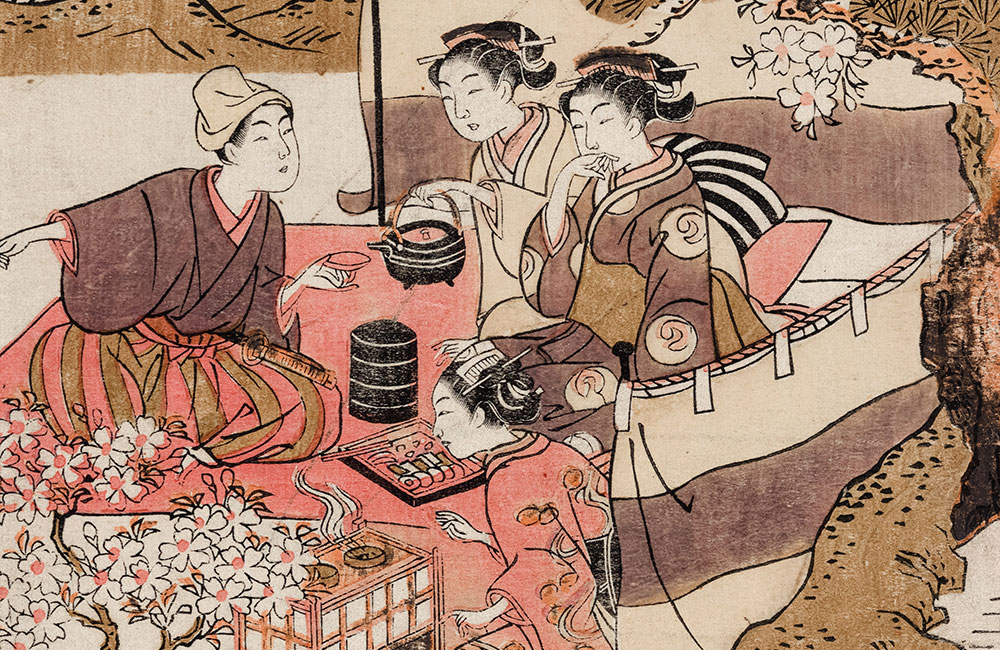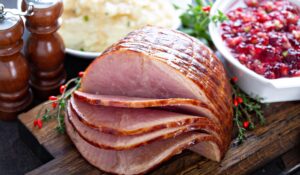Tea’s long and storied history is full of fascinating tidbits and traditions. These are some of our favorites.
The Story of Dragon Well
The legend went that Emperor Qianlong saw some ladies picking the tea at the foot of a mountain. He was so interested in their movements, he decided to also pick the tea. While picking the tea, he received news of his mother’s illness, so he carelessly put the leaves in his right sleeve and left for home.
He visited his mother immediately upon his arrival, and when she smelled the fragrance of the leaves in his sleeves, she wanted a taste. After she drank the tea, she was cured of her illness, and Dragon Well has been a tribute tea ever since.
Featured Tea: Dragon Well Green Tea is one of the 10 famous Chinese teas. The olive toned leaves impart a smooth and slightly sweet flavor.
Genmaicha: Poor Man’s Tea
Genmaicha is commonly referred to as “Poor Man’s Tea” because of tea’s status as a luxury drink in 17th century Japan. Common men could not afford good tea like emperors or monks, so they put in roasted brown rice in cheaper tea leaves. Today all sorts of teas are affordable for everyone to enjoy, though Genmaicha’s taste and appearance still makes it a popular drink to sip.
Featured Tea: Genmaicha Japanese Green Tea has more body than other greens and gets an extra lift with the addition of Matcha. The sweetness of the matcha makes a great contrast to the toasted flavor of the rice.
How Oolong Got Its Name
Legend has it that one day, a tea planter found a tea bush in full blossom and picked some of its leaves to make some tea. He drank some, then offered his tea to his neighbors. There were thrilled with the brew, so the planter invited them to name the tea.
One morning a tea picker came to the unnamed tea bush at dawn and saw a black snake coiled around its branches. When the picker drew near, the snake slithered away.
Thinking the snake was drawn to the wonderful aroma of the tea leaves, the neighbors called the tea Wu-Long. “Wu” means “black” and “long” means “dragon” or “snake”.
Featured Tea: Fern Stream Taiwan Oolong Tea from Taiwan has a complex array of flavors through each infusion. It is a great example of the roasting skills shown by the tea maker.
A Brief Modern History of Tetsubin Teapots
Watch the video: https://youtube.com/shorts/Po9GzfHsB-M
During a period of about 150 years up to WWII, cast iron teapots with handle and spout called Tetsubins were popular in Japan both as everyday household utensils and for informal and semi-formal tea drinking.
Most of them, although made with care, were not considered objects of great artistic consequence. Sparingly decorated, they simply served to heat the water for the household, and for that purpose, they were hung over the fire or placed on a Hibachi.
Tetsubins were made of pig iron. This pig iron was made by a Traditional Japanese process, or after the Restoration of 1868, Western furnaces, by then established at many places in Japan.
Featured Tetsubin Teapot: Like all Tetsubins, our 22 ounce Hobnail Tetsubin Teapot is made from cast iron and retains heat extremely well, allowing you to enjoy your tea at your own pace.
Hibiscus Flower in Hawaiian Culture
The hibiscus flower symbolizes beauty and joy in Hawaiian culture. It is why the locals can frequently be seen wearing them.
If the hibiscus flower is worn behind a woman’s left ear, she is either taken or married. However, wearing it behind the right ear means she is single and available.
Featured Herbal Tea: Organic Hibiscus Herbal Tea is fabulous as a cocktail base and we love it carbonated, particularly in the summer! Cold brew it to retain the high-levels of Vitamin C.
Chamomile: a Rare and Sacred Herb
The Anglo-Saxons considered Chamomile to be a rare and sacred herb. In an Old-English herbal guide called The Lacnunga, it mentions all of Chamomile’s healing properties.
Featured Herbal Tea: Eastern Chamomile usually comes from Egypt and has been used for thousands of years as natural remedy for anxiety, sleeplessness, and digestive issues.
Which legend is your favorite? Let us know in the comments below!



